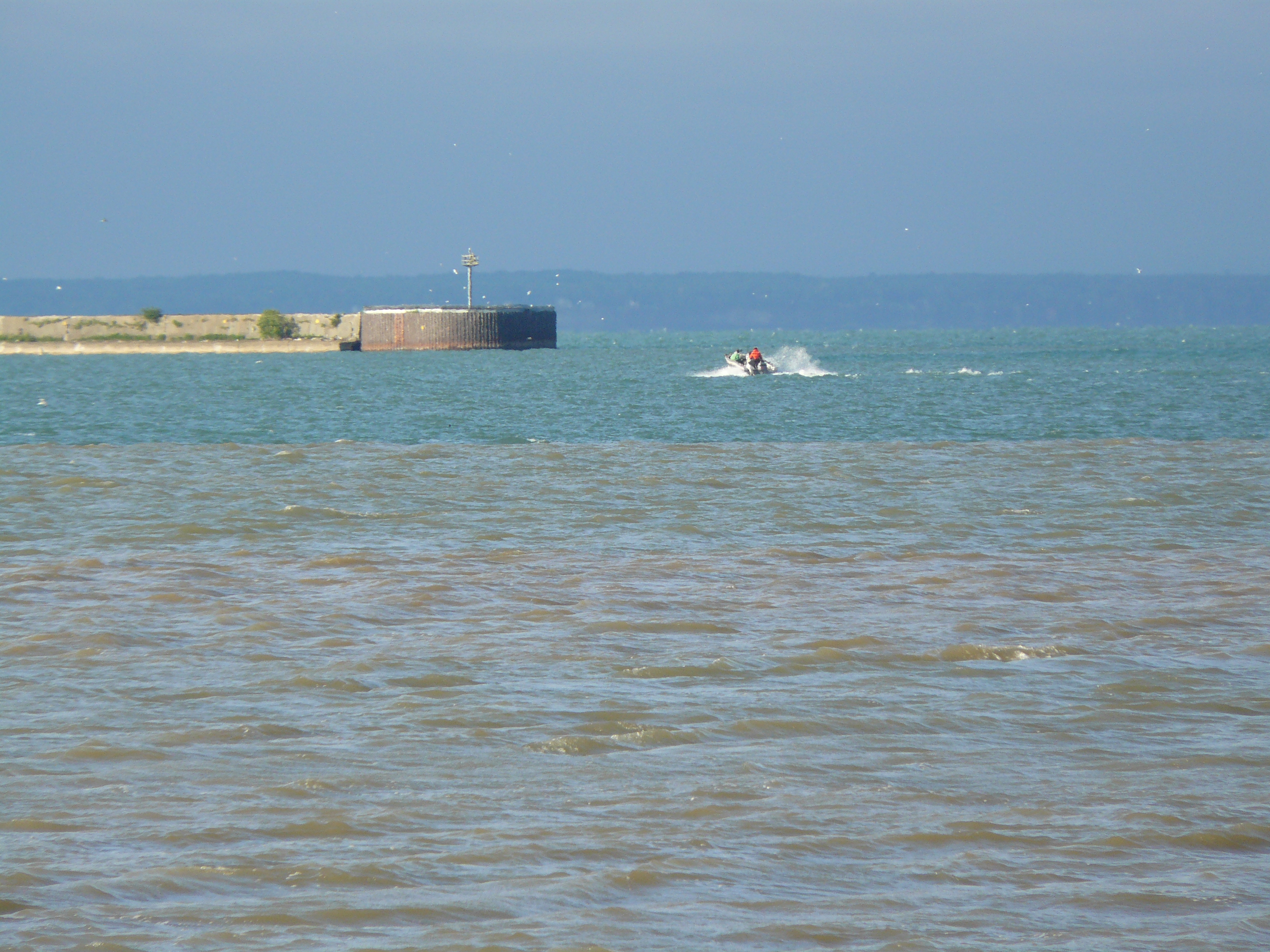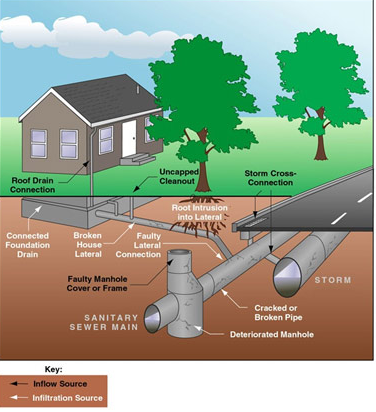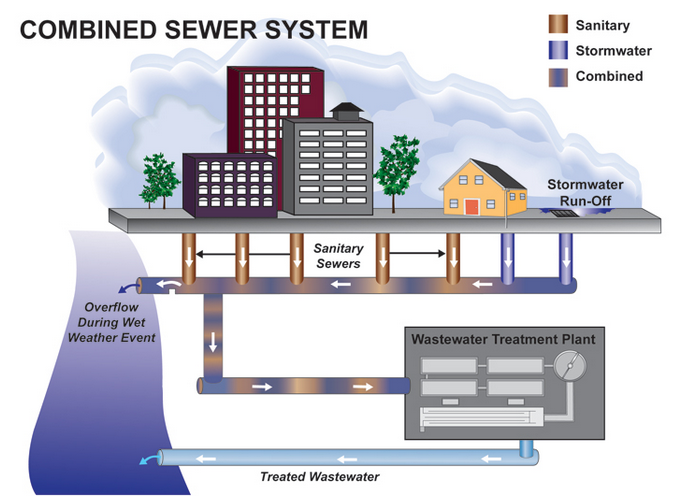Jun 21
2013
DEC’s sewage discharge reports lack details


This combined sewer overflow in Black Rock Canal near Lasalle Park turns the water brown. Overflows are supposed to be reported to the public within four hours of discovery, but it isn’t happening. Photo: Buffalo-Niagara Riverkeeper
The intent of the Sewage Pollution Right to Know law passed 10 months ago was to inform state residents within four hours of sewage overflows into waterways to protect them from the dangers of swimming or fishing in tainted water.
Not only would residents know the estimated amount of all overflows, they would know where it happened, the duration, what time, the reason and a description of steps taken to control it from happening again.
But only half of the disclosure is happening 45 days since the law went into effect.
The Department of Environmental Conservation and environmental advocates are interpreting the law differently, with the DEC’s view of the law allowing for less public disclosure.
Most overflows were not made public before the law passed May 1.
The intent is to provide public notification and bring awareness to what has been a dirty secret that harms streams, rivers, the Great Lakes, while putting public health at risk.
The DEC began reporting on its website overflows from sanitary sewer systems across the state shortly after the law went into effect. Those reports are often incomplete, which violates the intent of the law.
For example, there are 112 overflow reports since June 1. Less than half of the reports contain the estimated amount of the overflow. The DEC hasn’t been updating the log on a regular basis, so there isn’t timely notification of the overflows.
Another problem is combined sewer overflows, which contains storm water and raw sewage, are not getting reported and there isn’t much hope they ever will be.
“We strongly believe it is the intent of the law to provide the public with notification of combined sewer overflows,” said Brian Smith, spokesman for environmental advocacy group Citizens Campaign for the Environment.
Marc Gerstman, executive deputy director for the DEC, said there are 440 sanitary sewer systems in the state, none of which the agency had to regulate until the law went into effect May 1. He said that since the law passed DEC officials have been reaching out to environmental groups and plant operators to get feedback on developing regulations for how plant operators will notify the public of overflows so “we get them right the first time.”
“We want to ensure that whatever digital mechanism we use to collect reports and disseminate them is not an undue burden to the operators and is available to the public in easily understandable terms,” he said. “In addition, we have been working to get information from more than 400 previously unregulated entities. That is a substantial undertaking.”
What are overflows?
Sewer systems in Western New York can overflow when there’s moderate to heavy rain.
Sanitary sewer systems in the suburbs carry sewage from homes and buildings in one pipe for treatment. Another pipe carries storm water and sends it to numerous outflow points in local waterways without treatment. Surface water from rain can infiltrate separate sanitary sewer systems through various sources, including cracks in the buried pipes, and the overflows are channeled into the storm water system to prevent backups in homes and damage to treatment plants.
There were almost 7 million gallons of sanitary sewer overflows last month in Erie and Niagara counties. These overflows violate the Clean Water Act and operators can be fined.
Combined sewer systems, such as the one in Buffalo, are designed to occasionally overflow. These systems, which still exist in about 700 cities, are remnants of early infrastructure in mostly the Great Lakes region, the Pacific Northwest and the Northeast. They carry storm water and sewage in one pipe for treatment.
Operators of these systems have permits to discharge raw sewage when capacity is exceeded when it rains. New York State has 76 combined sewer overflow permit holders with 966 discharge outlets into local waterways.
The Buffalo Sewer Authority has more than 50 discharge outlets that spew out a mixture of storm water and raw sewage into places like Lake Erie, Black Rock Canal, Niagara River and Ellicott Creek.
Here is a map of all of the state’s combined sewer overflow discharge points, including Buffalo. Neither the DEC nor the operators of approximately 60 combined systems across the state are reporting these overflows to the public even though the law requires it.
Both of these overflows are dangerous because they carry pathogens and toxic chemicals into local waterways that can get people sick, especially those with compromised immune systems. The impacts go beyond those to just humans.
Sewage overflows can kill fish, contaminate drinking water supplies and destroy aquatic life. Nine localities in Western New York — City of Tonawanda, Silver Creek, Town of Amherst, Niagara Falls, Grand Island, Town of Cheektowaga, Williamsville, West Seneca and Village of Lancaster — are under consent orders with the DEC to control these overflows.
Ending these overflows would cost billions of dollars in green infrastructure and plant improvements in this region alone. Most plants in this region are under consent orders with either the DEC or the EPA to work toward that goal, but it could take decades.
DEC’s plan conflicts with law’s intent
The DEC created a spreadsheet with details on sanitary sewer overflows across the state.
However, most of details are missing, including estimated amounts of overflows, specific locations and duration of the overflow and the notification isn’t coming within the four-hour window.
On May 1, the DEC issued a press release stating that the agency was implementing the law in phases.
The first phase includes the spreadsheet report. DEC has added 194 discharge reports to the log since May 1.
“In the first six weeks of implementation, we have noticed that the DEC has taken over two weeks to post this information on its website. We don’t consider that to be ‘expeditious,'” Smith said.
Lisa King, a DEC spokeswoman, said the agency will begin updating the log on a daily basis, but categories may still be left blank.
“If a category is left blank, they may not yet have all the details needed to fully complete the form. The facility is required to send a follow-up report within five days to provide all details on the event,” she said.
But the DEC is not updating the log with the information gleaned from the follow-up reports.
DEC officials said some of the log entries are incomplete because there is only a two-hour window for plant operators to report the overflow to the DEC. That’s not always enough time to know the amount of the overflow or the duration of it. They said the follow-up reports are not digitized and there is no process in place to update the overflow log with the missing categories, which means the public may never know how much sewage overflowed in some instances.
The second phase, and probably the most important, is developing regulations to require public treatment plants and sewer system operators to notify the public directly of the discharges.
DEC officials said they have been working with environmental groups and municipal plant operators since the law passed in August 2012 and draft regulations aren’t expected until the fall.
The law requires reporting combined sewer overflows, but the DEC has a different interpretation. Department officials said they will only require a plant to report combined sewer overflows if it has the capability to detect and measure the discharges. Most do not, said King. The DEC believes the law does not require it to impose monitoring of combined sewer overflows for municipalities.
Instead, the DEC created a “wet weather advisory” website that officials said is “adequate.” That page contains maps showing all overflow points in the state and a warning to avoid swimming or fishing in water near any of the overflow points during and after rain or snow melt.
How long does one have to wait before they can fish or swim in the water again? The DEC said it is working with the state health department to determine a timeframe.
Also, the DEC said public plant operators do not have to report combined sewer overflows caused by rain – a decision that seems to fly in the face of the law’s intent and has drawn the concern of environmental groups because most combined sewer overflows happen because of rain.
“I disagree. We don’t believe that this is adequate,” said Smith. “We feel that the language is very clear and the law covers combined sewer overflows.”
Smith said Onondaga County has a website that provides residents with alerts when there are combined sewer overflows with the locations. A color-coded map tells the visitor the probability a sewer overflow will occur in a specific location.
“This is not putting an undue burden on sewer operators,” Smith said. “We want to work with sewer operators and with the state to fulfil the intent of the law, which is to give the public information so they can avoid exposure to harmful sewage overflows.”


